
India is a land of varied cultures and different types of mouth-watering cuisines. The country boasts of a plethora of delicacies that each cuisine offers. Indian food can be described as a riot flavors since each region and culture have their own taste. With that being said, the state of Maharashtra offers a wide range of sweet and savory dishes with unique tastes to make your taste buds dance. But let’s take a small detour to learn briefly about the state’s history.
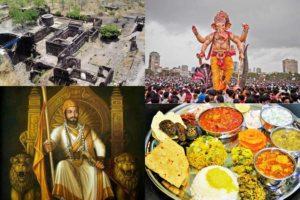 The state of Maharashtra has a very rich history and it first appeared in a seventh-century inscription in a Chinese traveler’s account. According to him, the name of the state derives from Maharathi (great chariot driver), referring to a skillful fighting force. Fast forward a few years later, Muslim dynasties ruled over Maharashtra, and the state was divided into several factions. However, a great leader named Shivaji Bhosale rose to the occasion and built a Maratha empire lasting for years and ushered in a new era for the people. Maharashtrian cuisine’s distinction increased in the 17th century. The delicacies prepared in the royal kitchens were an exquisite experience and every meal included a range of vegetarian and non-vegetarian delicacies balancing each other.
The state of Maharashtra has a very rich history and it first appeared in a seventh-century inscription in a Chinese traveler’s account. According to him, the name of the state derives from Maharathi (great chariot driver), referring to a skillful fighting force. Fast forward a few years later, Muslim dynasties ruled over Maharashtra, and the state was divided into several factions. However, a great leader named Shivaji Bhosale rose to the occasion and built a Maratha empire lasting for years and ushered in a new era for the people. Maharashtrian cuisine’s distinction increased in the 17th century. The delicacies prepared in the royal kitchens were an exquisite experience and every meal included a range of vegetarian and non-vegetarian delicacies balancing each other.
What delicacies come to your mind when you think of Maharashtrian cuisine? Vada Pav? Pav Bhaji? Almost every day, we indulge ourselves in some of the irresistible and inexhaustible variety of street foods that this state has to offer. Maharashtra not only consists of beautiful beaches and forts but also an abundance of exotic delicacies with unique tastes.
Maharashtra’s regional diversity elaborates into different parts- Konkan, Desh, Khandesh, Marathwada, and Vidarbha. The Konkan region is a coastal region and consists of cities like Raigad, Thane, Mumbai, Ratnagiri, and Sindhudurg. Konkani cuisine is diverse and consists of ‘sub-cuisines’ like Malvani and Saraswat Brahmin, where seafood with some steamed rice is a heavenly combination.
Inwards to Konkan, the Desh region includes Pune, Satara, and Kolhapur, and this region formed the basis of the Maratha  empire. Spicy and richness are the two characteristics to describe the cuisine from this region.
empire. Spicy and richness are the two characteristics to describe the cuisine from this region.
The Khandesh region comes to the North of the Desh region comprising Nashik, Jalgaon, and Ahmednagar. The food here is influenced by the neighboring states of Gujarat and Rajasthan.
Moving inland comes Marathwada; a hot and arid region where sun-drying vegetables is a common practice. The region includes Nanded, Beed, Latur, Jalna, Aurangabad, and other neighboring states.
The north-east region of Maharashtra is the Vidarbha region which includes Nagpur, Amravati, Chandrapur, Akola, and Bhandara. Although a part of Maharashtra, its cuisine is affected by Madhya Pradesh, Chattisgarh, and Telangana. This region’s culinary special is the Saoji cuisine, practiced by the Halba Kosti tribe. It involves spicy mutton and chicken curries which have a unique flavour and an authentic blend of homemade spices. A must-try here people!!
The state’s culture has numerous unique delicacies, some of which are popular and some are very rare. One of the homeliest dishes is the Amti. Made of Toor dal, it also consists of tamarind, jaggery, and coconut providing the dish a sweet, tangy, and spicy flavour. Another such dish is Bharli Vangi (stuffed eggplant). The stuffing consists of coconut, peanuts, tamarind, onions, and a unique masala to give it a mouth-watering taste. Usal is also a popular curry dish in Maharashtra which is prepared with a variety of sprouted beans. A quintessential comfort dish is the Metkut bhaat, where Metkut is a fine powder consisting lentils, grains, and spices, and is found in almost all Marathi households.
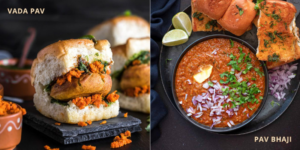 Maharashtrian cuisine comes with a great selection of snacks and have satisfied many bellies in this state and the country. Pav Bhaji and Vada Pav’s monarchy in the fast-food sector has attracted a crowd from beyond the borders of this country. Pav Bhaji involves mixed veggies cooked in butter and a unique blend of spices, partnered with bread. The name Vada Pav stimulates a drooling reaction from all Mumbaikars as it’s The dish of this metropolitan city. Deep-fried fritters consisting of spiced and mashed potatoes placed inside a split pav with some zesty chutney!! Mmmmmmmm!!
Maharashtrian cuisine comes with a great selection of snacks and have satisfied many bellies in this state and the country. Pav Bhaji and Vada Pav’s monarchy in the fast-food sector has attracted a crowd from beyond the borders of this country. Pav Bhaji involves mixed veggies cooked in butter and a unique blend of spices, partnered with bread. The name Vada Pav stimulates a drooling reaction from all Mumbaikars as it’s The dish of this metropolitan city. Deep-fried fritters consisting of spiced and mashed potatoes placed inside a split pav with some zesty chutney!! Mmmmmmmm!!
Misal Pav is also a popular delicacy consisting of spicy curry made of sprouted beans topped with chopped onions, cilantro, farsan for some crunch, and a dash of lemon juice. Another MUST-TRY dish in Maharashtra is Poha. This breakfast dish originates from this state and consists of flattened rice flakes tempered with oil, curry leaves, onions, mustard seeds, and peanuts. Looking for a snack while fasting? Sabudana Khichdi comes to the rescue. Consisting of tapioca pearls, it’s tossed in with potatoes, peanuts, and selected herbs. Monsoon season indicates the arrival of Alu Vadi which is made of Colocasia leaves. Covered with gram flour, they are steamed and fried to give it that perfect crispiness!! My god writing all this is making me hungry!! What about you?
In Maharashtra, the Kolhapuri cuisine is the epitome of non-vegetarian delicacies. Rich with spicy rassa (a type of gravy), it acquaints us with the royal Maratha kitchens. Meat, mostly mutton, is an integral part of any Kolhapuri meal. The unique taste and richness of their dishes come from a blend of spices known as kanda-lasun masala (onion-garlic). Pandhra (White) and Tambda (Red) rassa originate in this region to tease one’s tastebuds. Lavangi, a special variant of the red chilli, is native to this region and is bound to make your mouth numb. Whoo, that’s a lot of spicy!!
 There are various selection dilemmas when it comes to authentic Maharashtrian desserts. The most popular desserts in Maharashtra are Modaks and Puran Poli. Puran Poli is a sweet flatbread stuffed with a combination of jaggery and Bengal gram. Ukadiche modak, favourite delicacy of Lord Ganesha, is basically sweet dumplings consisting of a mixture of coconut and jaggery. Modaks gain high demand during the Ganesh chaturthi festival, one of the biggest festivals in Maharashtra.
There are various selection dilemmas when it comes to authentic Maharashtrian desserts. The most popular desserts in Maharashtra are Modaks and Puran Poli. Puran Poli is a sweet flatbread stuffed with a combination of jaggery and Bengal gram. Ukadiche modak, favourite delicacy of Lord Ganesha, is basically sweet dumplings consisting of a mixture of coconut and jaggery. Modaks gain high demand during the Ganesh chaturthi festival, one of the biggest festivals in Maharashtra.
Dairy-based desserts include Shrikhand and Basundi. Shrikhand consists of hung curd sweetened using powdered sugar. Basundi is a sweet treat, which consists of thickened milk combined with cardamom, nutmeg, and dry fruits. Let your taste buds dance with these sweets!!
Well, all these delicacies have left all of us salivating. So, which is your favourite delicacy and which will you try first? You can explore our website as well to experience these delicacies at the comfort of your home!!


 Food is a necessity for all living beings in this world. However, ‘food safety’ is a critical stage in guaranteeing that food stays safe at every stage of the food chain. Access to a good chunk of hygienic food is key to maintaining a long life and promoting good health. It’s estimated that there are about 600 million cases of food-related diseases every year. Unsafe food poses a grave threat to human health as illnesses are usually infectious or toxic in nature. These are often caused by different types of bacteria, viruses, or chemical substances and enter the body through various means.
Food is a necessity for all living beings in this world. However, ‘food safety’ is a critical stage in guaranteeing that food stays safe at every stage of the food chain. Access to a good chunk of hygienic food is key to maintaining a long life and promoting good health. It’s estimated that there are about 600 million cases of food-related diseases every year. Unsafe food poses a grave threat to human health as illnesses are usually infectious or toxic in nature. These are often caused by different types of bacteria, viruses, or chemical substances and enter the body through various means.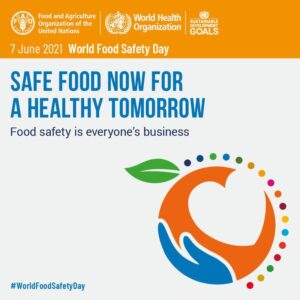 June. The year 2018 saw the first year for World Food Safety Day in an effort to reduce the burden of foodborne diseases.
June. The year 2018 saw the first year for World Food Safety Day in an effort to reduce the burden of foodborne diseases. In India, the first World Food Safety Day was celebrated on 6th June and was kicked-off at the FSSAI headquarters to commend the remarkable work of food businesses and individuals to promote food safety. Awareness for food safety has risen in recent times and everyone strives to procure safe and hygienic food. Foodborne diseases are gradually decreasing and we will be able to tackle this situation in the near future.
In India, the first World Food Safety Day was celebrated on 6th June and was kicked-off at the FSSAI headquarters to commend the remarkable work of food businesses and individuals to promote food safety. Awareness for food safety has risen in recent times and everyone strives to procure safe and hygienic food. Foodborne diseases are gradually decreasing and we will be able to tackle this situation in the near future. promote eating freshly cooked food.
promote eating freshly cooked food.





 In 1990, the Earth Day movement went global, mobilizing millions of people from hundreds of countries and lifting environmental issues to a global stage. Like a raging fire, this movement spread to corners of every country, making it a large-scale mission to save the Earth. While the movement went global, it gave a big boost towards recycling and helped pave the way for a United Nations Summit. However, this was only the first step towards a long and conserved future for coming generations.
In 1990, the Earth Day movement went global, mobilizing millions of people from hundreds of countries and lifting environmental issues to a global stage. Like a raging fire, this movement spread to corners of every country, making it a large-scale mission to save the Earth. While the movement went global, it gave a big boost towards recycling and helped pave the way for a United Nations Summit. However, this was only the first step towards a long and conserved future for coming generations.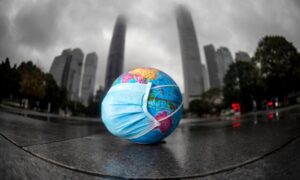 With these developments over the years, one this is for certain- the ravages of climate are more apparent than before!! Large scale fluctuations in weather affects flora and fauna. But with the help from the new generation, we can have a fiercer movement to save the natural beauty of our planet. Only with small changes today, can we have a large impact tomorrow. Let us all save the environment today, so that the next generation may have a better future!!
With these developments over the years, one this is for certain- the ravages of climate are more apparent than before!! Large scale fluctuations in weather affects flora and fauna. But with the help from the new generation, we can have a fiercer movement to save the natural beauty of our planet. Only with small changes today, can we have a large impact tomorrow. Let us all save the environment today, so that the next generation may have a better future!!
 While it’s an annual event, it lasts for about 29 to 30 days, from one sighting of the crescent moon to the next. The fasting from sunrise to sunset is ‘fard’, which is mandatory, while the predawn meal is ‘suhur’, and the nightly feast is ‘iftar’. The iftar meal is a vibrant affair that offers a wide variety of meals to experience!!
While it’s an annual event, it lasts for about 29 to 30 days, from one sighting of the crescent moon to the next. The fasting from sunrise to sunset is ‘fard’, which is mandatory, while the predawn meal is ‘suhur’, and the nightly feast is ‘iftar’. The iftar meal is a vibrant affair that offers a wide variety of meals to experience!! Muslim meals are incomplete without Biryanis. While kebabs are a popular delicacy, biryanis are also a staple food among the communities and are one of the most loved delicacies across India. According to an Indian restaurateur, Biryani originated in Persia, and it was the Mughals who brought it to India. Delicacies like Chicken biryani, Mutton biryani, Chicken Tikka biryani, and many others top the demands of customers during the iftar meals.
Muslim meals are incomplete without Biryanis. While kebabs are a popular delicacy, biryanis are also a staple food among the communities and are one of the most loved delicacies across India. According to an Indian restaurateur, Biryani originated in Persia, and it was the Mughals who brought it to India. Delicacies like Chicken biryani, Mutton biryani, Chicken Tikka biryani, and many others top the demands of customers during the iftar meals. Mutton Kadi Chawal is a
Mutton Kadi Chawal is a 
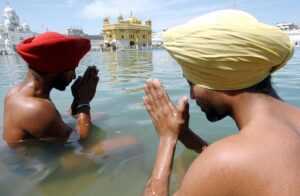
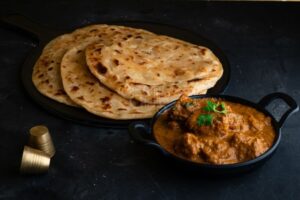

 With the onset of Summer and the end of Spring, it’s time to celebrate New Year’s Eve the Indian way!! Gudi Padwa and Ugadi are two such festivals that bring a new age. While Maharashtrians celebrate Gudi Padwa, Andhra Pradesh, Karnataka, and Telangana celebrate Ugadi/Yugadi. Both signify the beginning of an eventful and blessed year for the people. The word Ugadi derives from two words, yug- age and adi- beginning, whereas the word padava comes from the Sanskrit word, pratipad. Pratipad refers to the first day of the lunar fortnight.
With the onset of Summer and the end of Spring, it’s time to celebrate New Year’s Eve the Indian way!! Gudi Padwa and Ugadi are two such festivals that bring a new age. While Maharashtrians celebrate Gudi Padwa, Andhra Pradesh, Karnataka, and Telangana celebrate Ugadi/Yugadi. Both signify the beginning of an eventful and blessed year for the people. The word Ugadi derives from two words, yug- age and adi- beginning, whereas the word padava comes from the Sanskrit word, pratipad. Pratipad refers to the first day of the lunar fortnight. If we try to combine both the festivals’ delicacies, there are around 20 of them. So, we’ll keep it short and let you know the best delicacies that are a must try during this auspicious season.
If we try to combine both the festivals’ delicacies, there are around 20 of them. So, we’ll keep it short and let you know the best delicacies that are a must try during this auspicious season.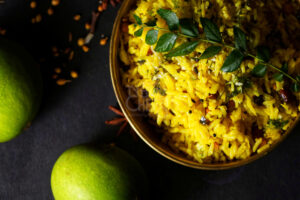 A savory dish that is popular in the Indian households is
A savory dish that is popular in the Indian households is 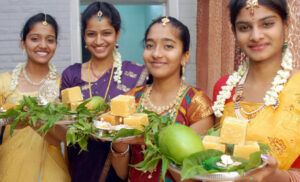 Another must-have during this festive period is Pulihora. While it’s also known as Tamarind Rice, it’s a specialty during Ugadi and contains a generous helping of chilies, coconut, peanut, and turmeric. Traditionally, people serve it as a prasadam in temples but it also acts as a competitor for mango rice.
Another must-have during this festive period is Pulihora. While it’s also known as Tamarind Rice, it’s a specialty during Ugadi and contains a generous helping of chilies, coconut, peanut, and turmeric. Traditionally, people serve it as a prasadam in temples but it also acts as a competitor for mango rice.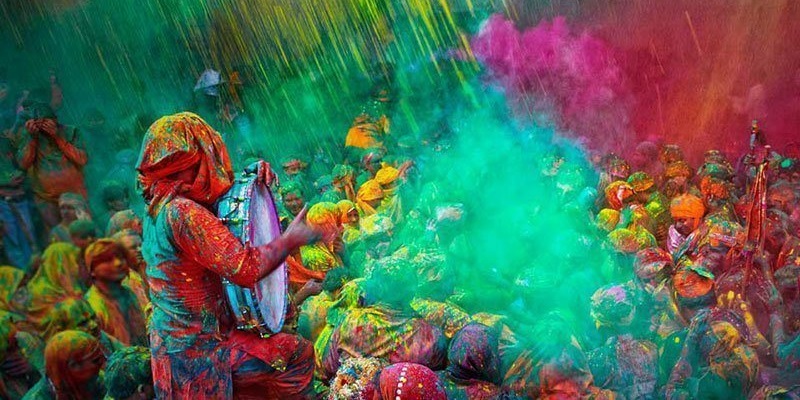
 Holi, also known as the Festival of Colours, marks the end of winter and the arrival of spring. It signifies the eternal love of Radha and Krishna and connotes the triumph of good over evil. We celebrate Holi over two days span, but the preparations last for a month!! Holi is the time where people forget and forgive about the past sins, and reconcile with their loved ones over delectable sweets and drinks.
Holi, also known as the Festival of Colours, marks the end of winter and the arrival of spring. It signifies the eternal love of Radha and Krishna and connotes the triumph of good over evil. We celebrate Holi over two days span, but the preparations last for a month!! Holi is the time where people forget and forgive about the past sins, and reconcile with their loved ones over delectable sweets and drinks.
 Basant Utsav
Basant Utsav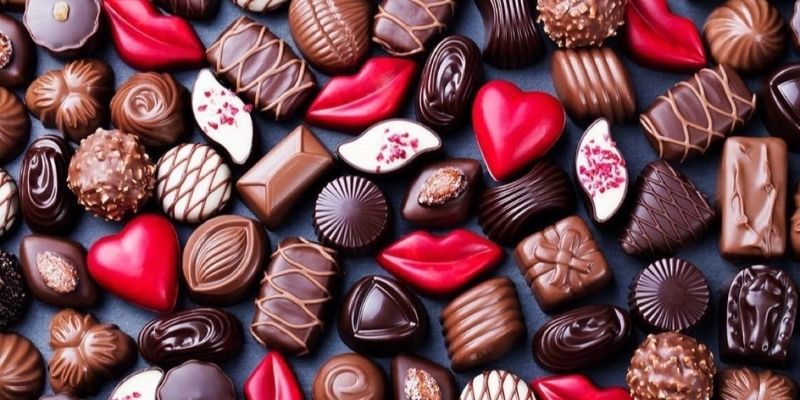
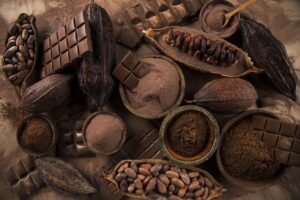 Do you know that chocolate is one of the oldest sweets in the world? The history of chocolates dates back to the Mayans, Aztecs, and Olmecs of Southern Mexico. According to some research, there are traces in the Olmec culture that are from around
Do you know that chocolate is one of the oldest sweets in the world? The history of chocolates dates back to the Mayans, Aztecs, and Olmecs of Southern Mexico. According to some research, there are traces in the Olmec culture that are from around 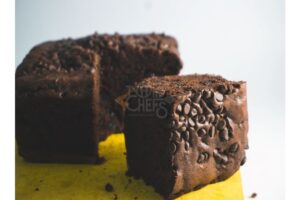 Over the years we have seen chocolate in various forms and companies developing different types of products to attract consumers. We have common chocolate bars, which are available readily in all types of stores.
Over the years we have seen chocolate in various forms and companies developing different types of products to attract consumers. We have common chocolate bars, which are available readily in all types of stores. 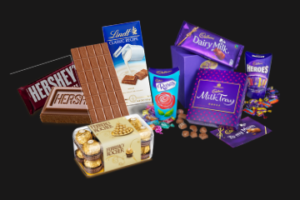 But what are some of the top chocolatiers?? European countries like Switzerland and Belgium are the chocolate capitals in the world. Also, leading brands like Cadbury, Ferrero, Guliyan, Hershey’s, Lindt, just to name a few are some of the best brands and have the finest quality of chocolates.
But what are some of the top chocolatiers?? European countries like Switzerland and Belgium are the chocolate capitals in the world. Also, leading brands like Cadbury, Ferrero, Guliyan, Hershey’s, Lindt, just to name a few are some of the best brands and have the finest quality of chocolates.
 Sankranti is celebrated differently in each state and the festival is known by different names like
Sankranti is celebrated differently in each state and the festival is known by different names like  It is a four-day festival in
It is a four-day festival in 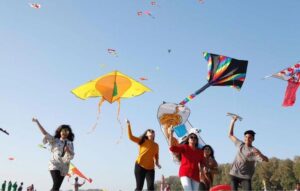 Maharashtra
Maharashtra